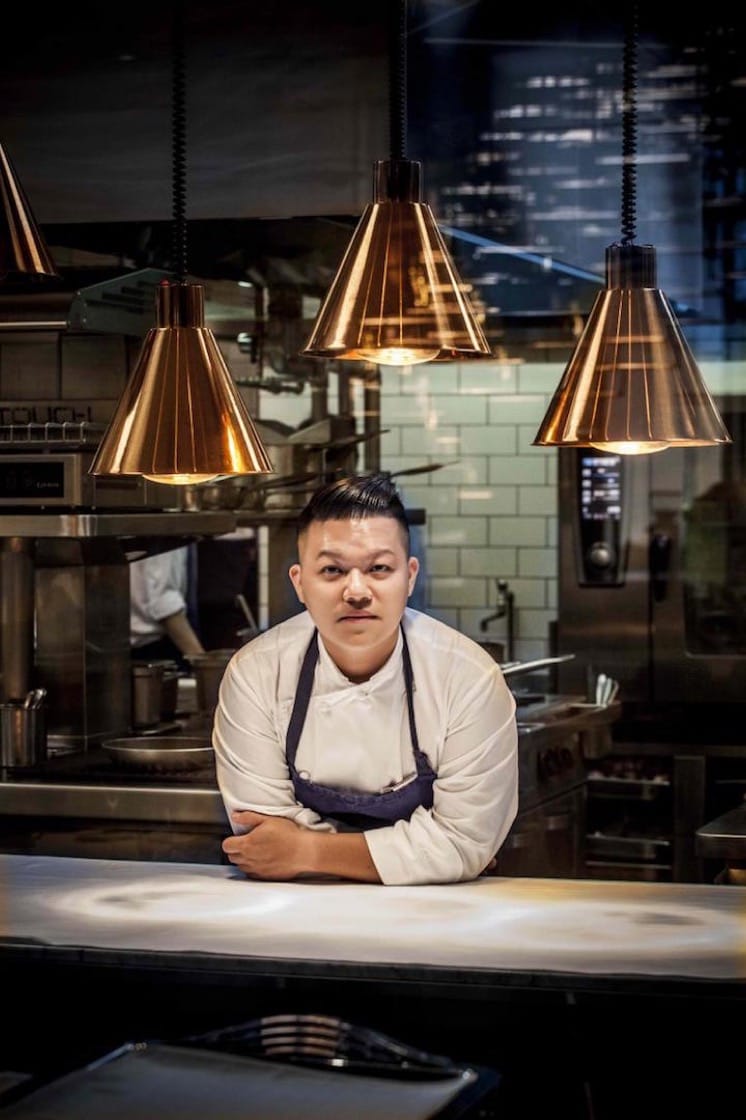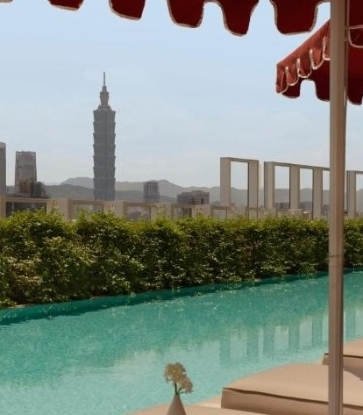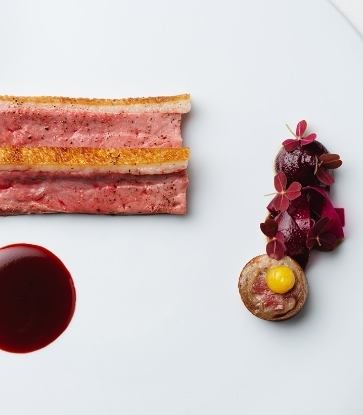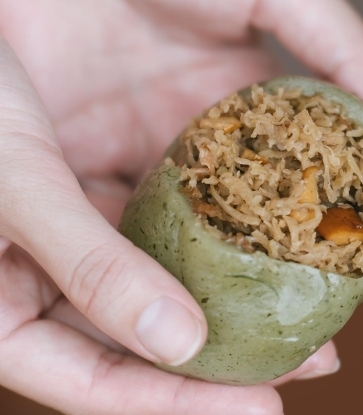In general, tea egg is made from cooking unshelled boiled egg in a master stock of star anise, Sichuan pepper, soy sauce and tea leaves. How good the egg tastes depends largely on how much flavour from the stock it absorbs. This explains why tea eggs always bear crack marks. As small gaps are made on the egg shells, the brown broth finds a way to seep into the egg, imparting umami and a spider web-like pattern onto it. A common saying compares the imperfect beauty of tea egg to our life, enriched by the trials and tribulations we encounter.

It’s Not Simple to Be Ordinary
Chef Kai Ho from Taïrroir told us his father travelled to many places as a truck driver. He often sat on the side of the vehicle in these delivery trips. When they came across a highway rest area, the easiest treats they could find were Taiwanese sausage, pork meat balls and tea eggs. Tea egg also found its way to Ho’s breakfast ritual alongside mantou and soy milk when he was carrying out the mandatory military service, and served as a primary source of protein in assistance of his workout. Being so close to this humble food made him realise how refined it actually is, and he was inspired to find tea egg its pair of Cinderella shoes.
The name of tea egg says it all about the importance of tea. Ho started by using black tea and oolong tea to boil the eggs, only to find the flavour too dark. So he switched to pu’erh, which was a satisfactory solution with the brighter smell it adds to the broth.
As for the egg, “You eat sunny side up for the yolk, but tea egg is all about the egg white,” Ho said. Unlike the thick gooey yolk you get in the fried version, hard-boiled egg yolk tends to be more chalky and hard to swallow. In comparison, the smooth egg white is the star of the show. Still, the powdery egg yolk with a bit of fat content has a nice aroma, which comes out the best eaten along with the white.
Tea Egg Made Seriously
Taïrroir is a restaurant which excels at deconstructing quotidian, basic food items, turning them into fine dining-worthy delicacies. Ho combines the features of tea egg and sunny side up in one single egg. Its surface is perfectly marbled, while the yolk has the lavish texture of honey. This takes him three full days of work, so that the master stock gets into the core of the egg.
“It’s a very seriously made tea egg,” he said.
At Taïrroir, the tea egg is presented beside a cracker whose pattern repeats that of the ellipsoid. The cracker is further decorated with typical Taiwanese congee condiments like pickled daikon radish, pickled cucumber and fermented bean curd. Before you dig in, a hot serving of chicken congee is pour on top of the egg, which is then ready to be eaten with the cracker and condiments on the side. The sumptuous egg yolk, delicate egg white, crunchy cracker, warming congee and comforting pickles one by one unfold on the palate.
Follow Ho’s recipe and make this deeply satisfying tea egg at home. The side ingredients are optional.

Tea Egg
Master stock ingredients
Water (200ml)
pu’erh tea leaves (6g)
Soy sauce (35ml)
Rock sugar (20g)
A little of Sichuan pepper, star anise and dried mandarin peel
Other ingredients
Eggs at room temperature (5)
Water (1L)
Salt (20g)
Method
1) Bring the water alongside the master stock ingredients to a boil. Set aside.
2) Boil a litre of water with salt. Add the eggs and cook for five minutes. Remove and put them in an iced water bath. Make some cracks on the egg shells.
3) Cook the eggs in the master stock for 30 minutes at 60°C. Refrigerate for 48 hours.
4) Take the eggs out. Remove the shells and serve.
Banner image courtesy of Chen Ching-Yi.
This article was written by Chen Ching-Yi and translated by Vincent Leung. Click here to read the original version of this story.






















